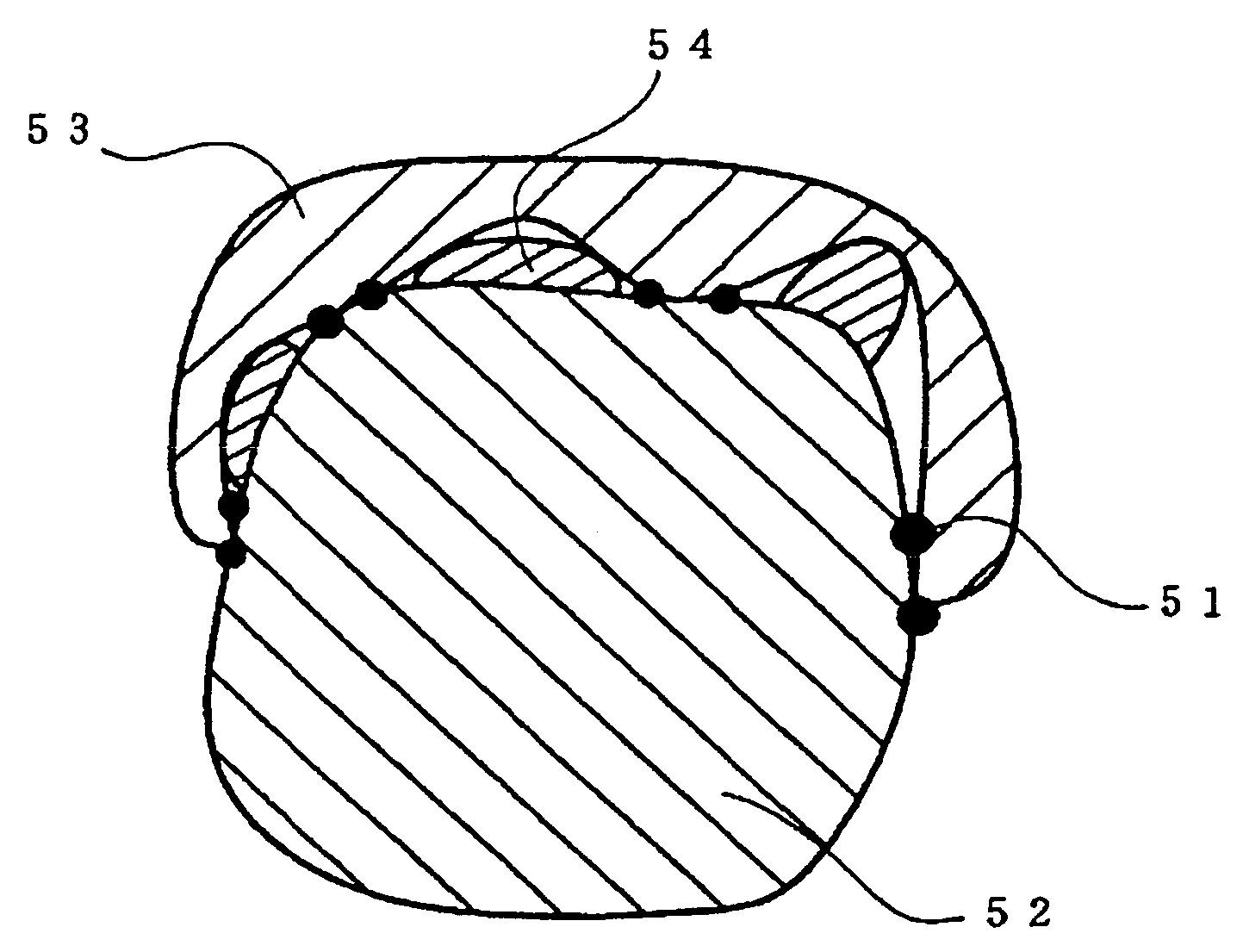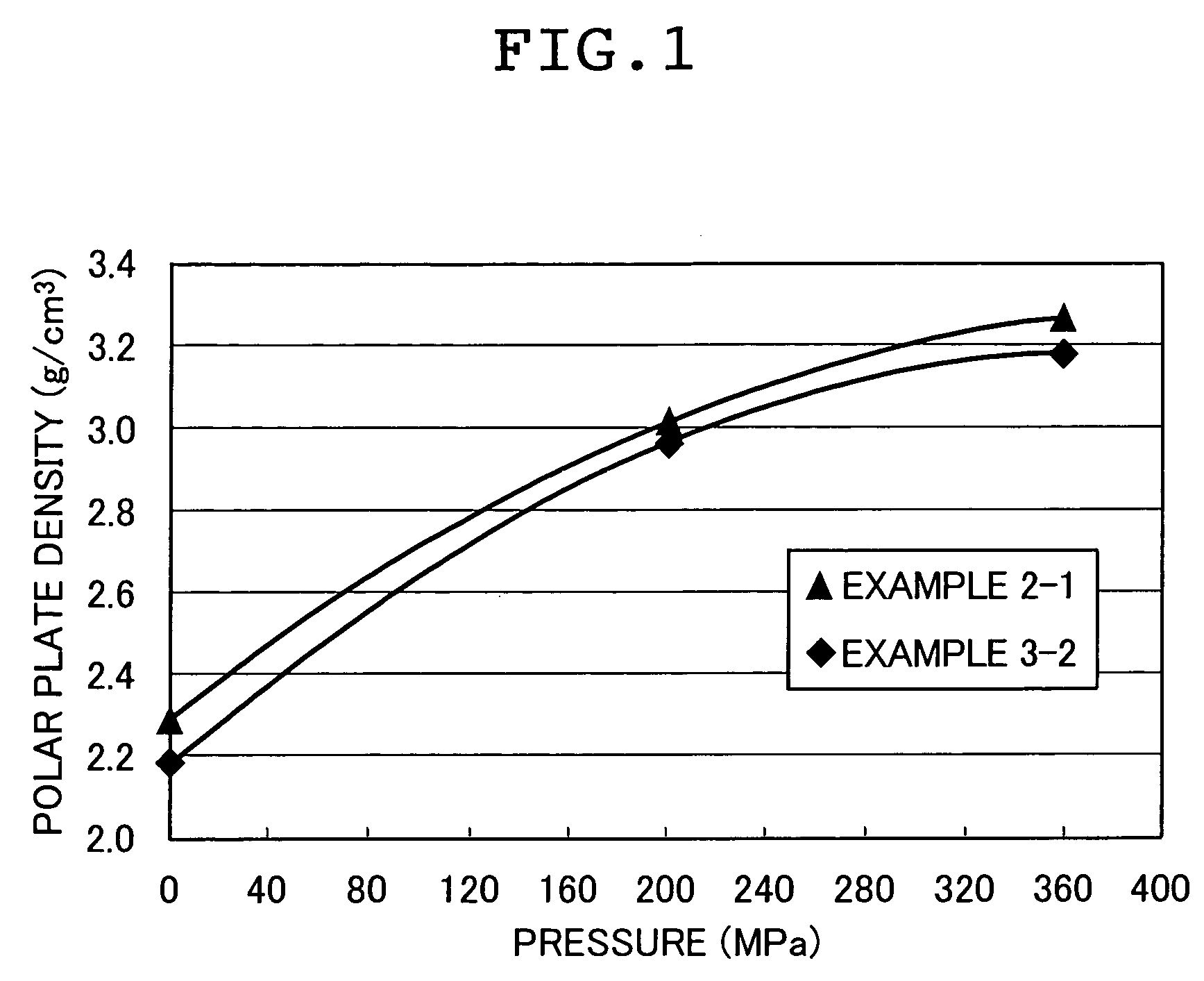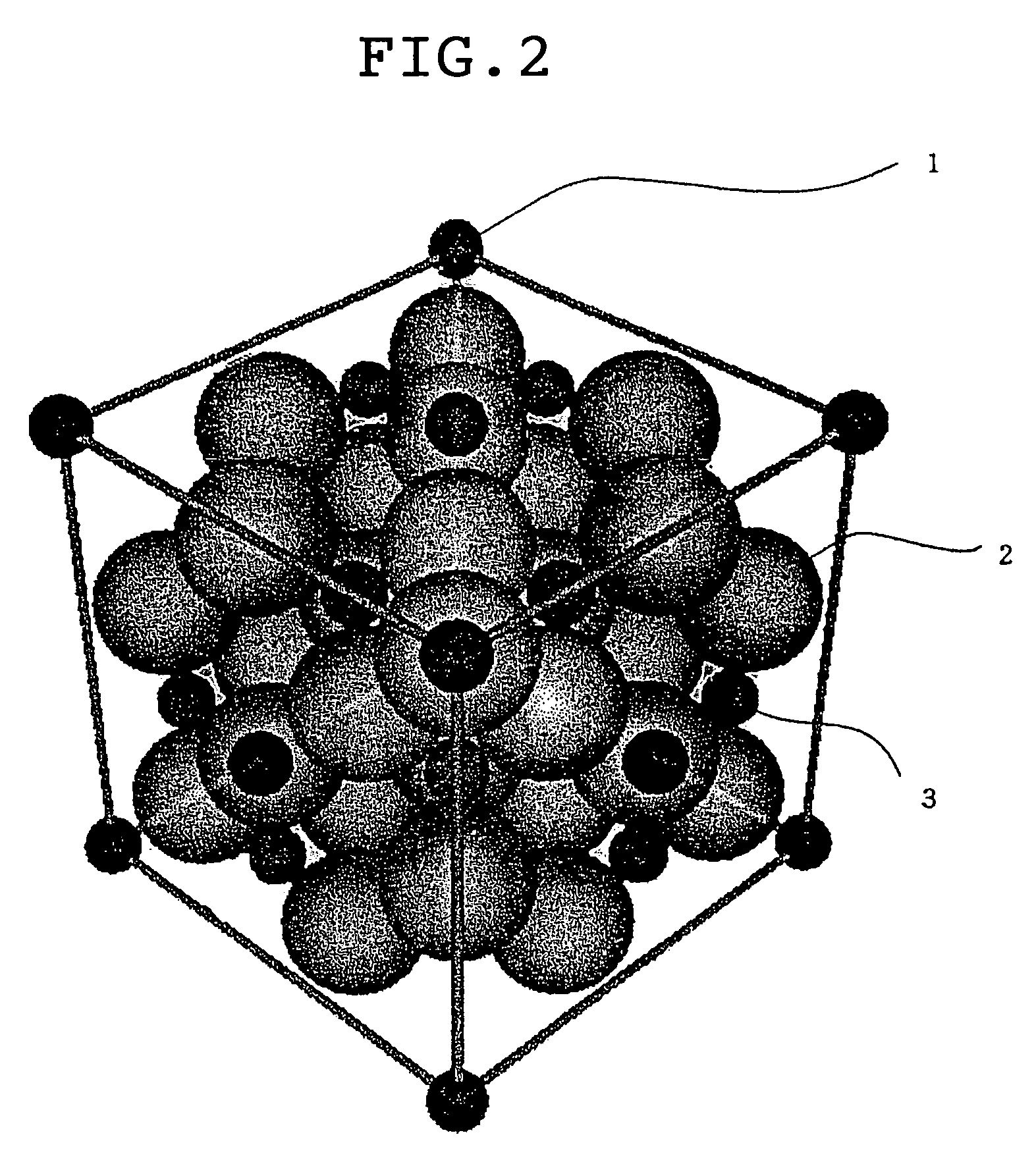Positive electrode active material for nonaqueous electrolyte secondary battery, positive electrode mixture for nonaqueous electrolyte secondary battery, and nonaqueous electrolyte secondary battery
- Summary
- Abstract
- Description
- Claims
- Application Information
AI Technical Summary
Benefits of technology
Problems solved by technology
Method used
Image
Examples
example 1-1
[0309]Carbonate of manganese and magnesium was washed with water, dried, and then mixed with orthoboric acid, zirconium oxide, and lithium carbonate. At that time, zirconium oxide was mixed so that zirconium accounted for 0.5 mol % with respect to a lithium manganese composite oxide. The obtained mixture was calcined at about 800° C. for about 10 hours. The resultant product was pulverized, to thereby obtain a positive electrode active material.
[0310]A compositional ratio of the obtained positive electrode active material was Li1.02Mn1.95Mg0.05Zr0.005B0.005O4.
example 1-2
[0311]Carbonate of manganese and magnesium was washed with water, dried, and then mixed with orthoboric acid, cerium oxide, and lithium carbonate. At that time, cerium oxide was mixed so that cerium accounted for 0.3 mol % with respect to a lithium manganese composite oxide. The obtained mixture was calcined at about 800° C. for about 10 hours. The resultant product was pulverized, to thereby obtain a positive electrode active material.
[0312]A compositional ratio of the obtained positive electrode active material was Li1.04Mn1.93Mg0.05Ce0.003B0.005O4.
example 3-1
[0313]Carbonate of manganese and magnesium was washed with water, dried, and then mixed with orthoboric acid and lithium carbonate. The obtained mixture was calcined at about 800° C. for about 10 hours. The resultant product was pulverized, to thereby obtain a positive electrode active material.
[0314]A compositional ratio of the obtained positive electrode active material was Li1.04Mn1.93Mg0.05B0.005O4.
PUM
 Login to View More
Login to View More Abstract
Description
Claims
Application Information
 Login to View More
Login to View More - R&D
- Intellectual Property
- Life Sciences
- Materials
- Tech Scout
- Unparalleled Data Quality
- Higher Quality Content
- 60% Fewer Hallucinations
Browse by: Latest US Patents, China's latest patents, Technical Efficacy Thesaurus, Application Domain, Technology Topic, Popular Technical Reports.
© 2025 PatSnap. All rights reserved.Legal|Privacy policy|Modern Slavery Act Transparency Statement|Sitemap|About US| Contact US: help@patsnap.com



